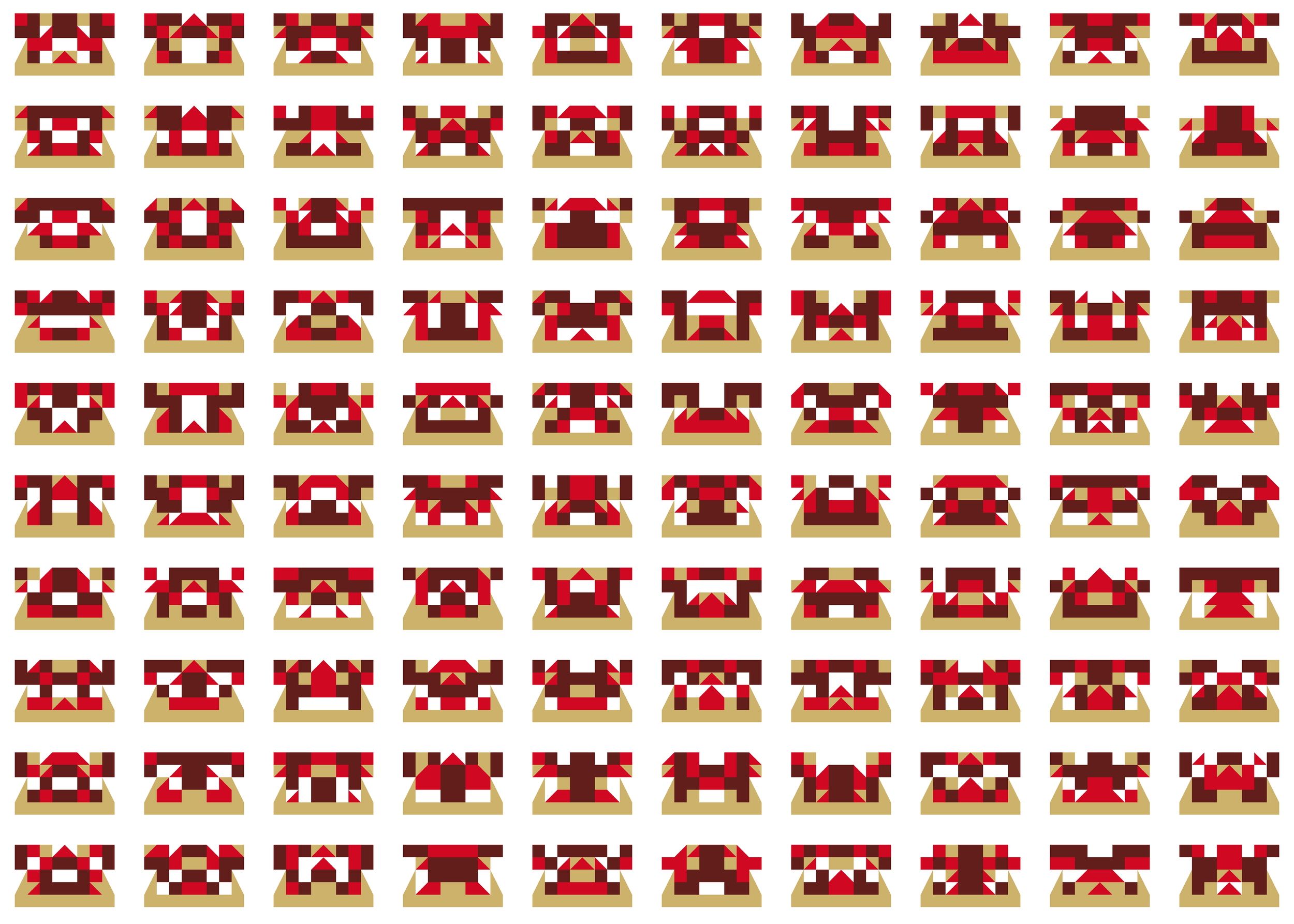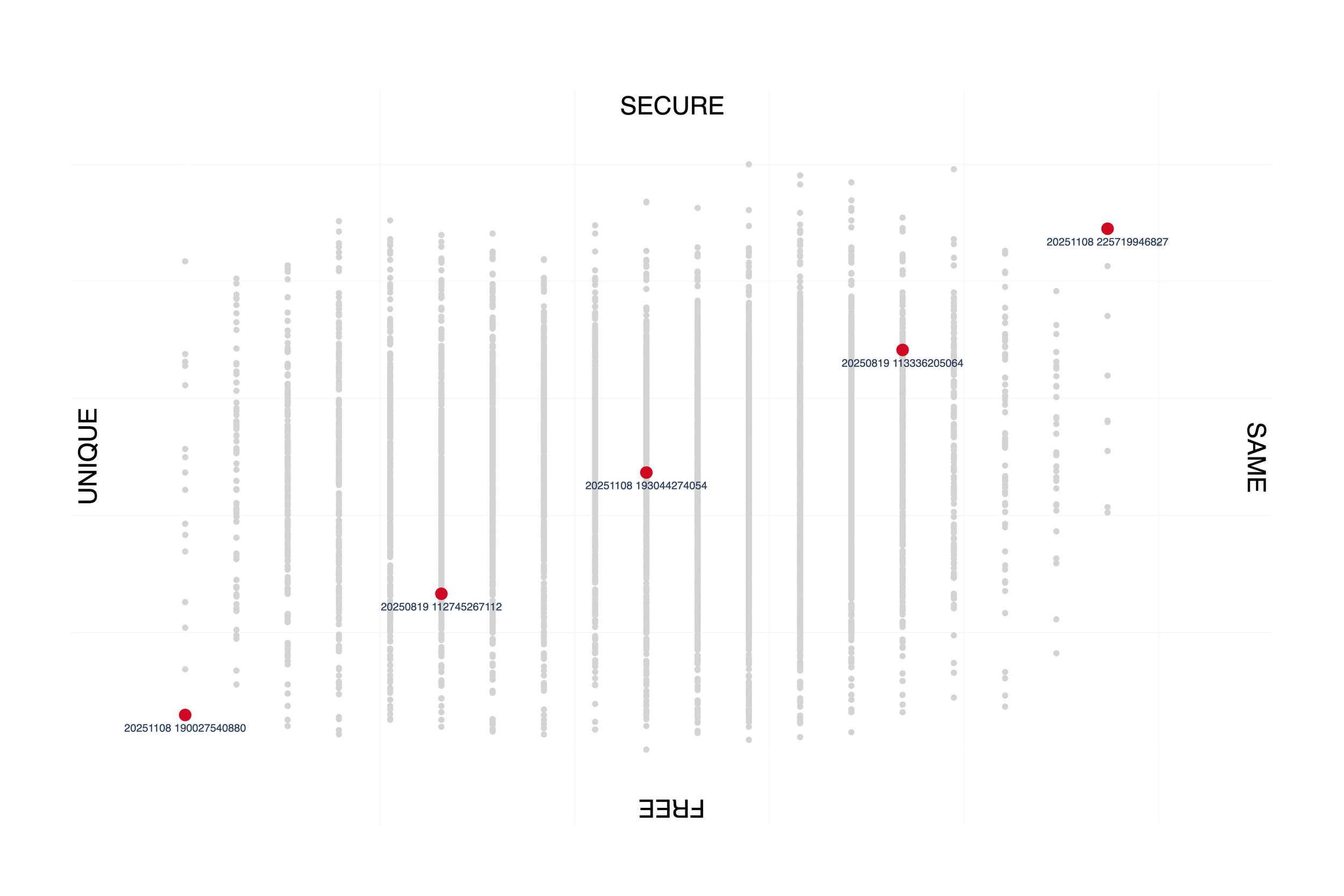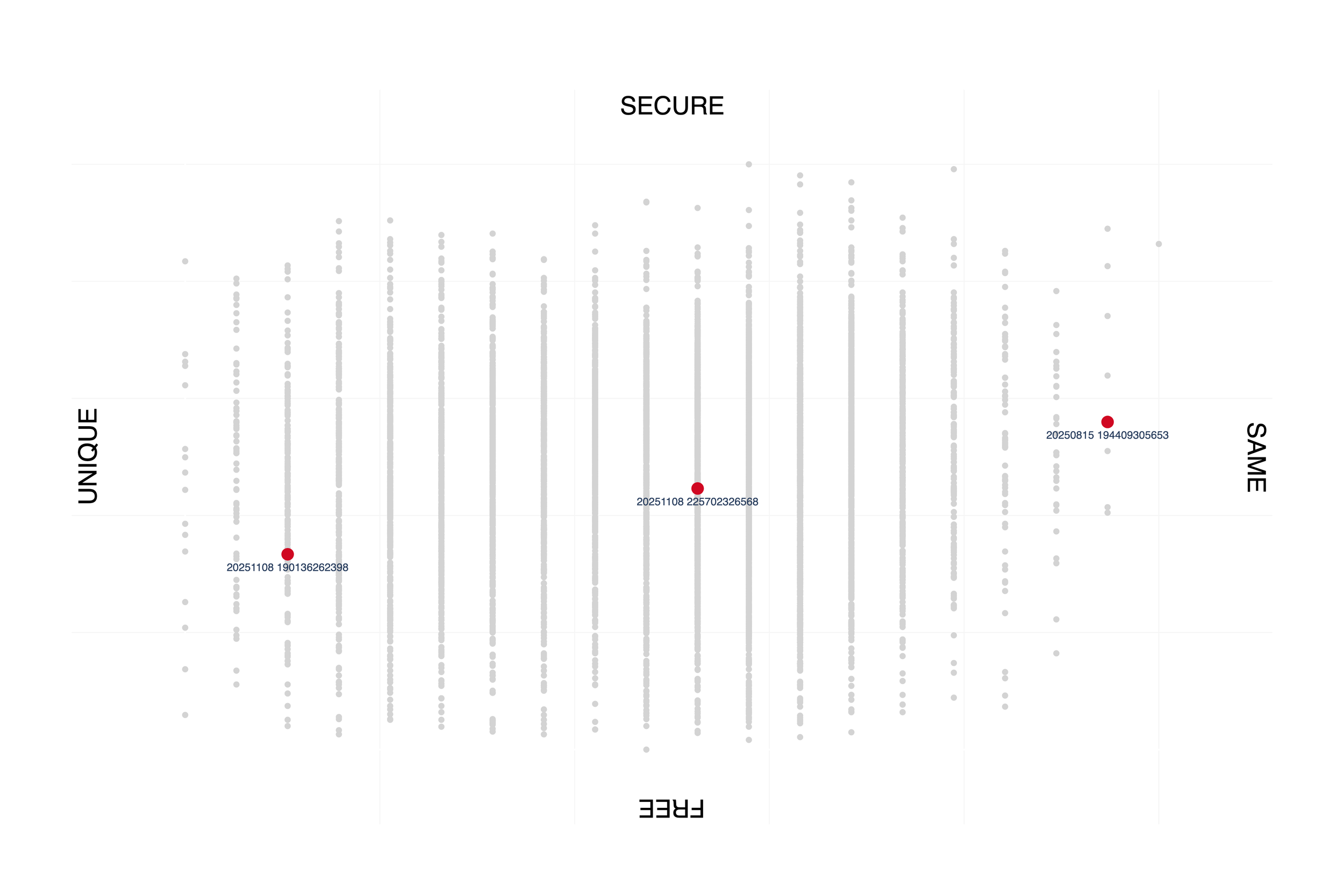Process work in computational quilting.
At the intersection of craft and computational design, I am exploring the process of moving through difficult emotions using my personal art practice. I have made quilts for years and love to use the time to reflect. Last year, I decided to create a digital tool to generate new designs and add another layer of introspection to the process.
I used python to randomly generate new quilt designs based on an existing quilt (above). After realizing that I now had over 3 trillion options, I wondered when I would know which one to pick.
How do I know if I’m making the right quilt?


So I developed a grading system. Each quilt is given two scores: one for how similar they are to the original quilt, the other for how “secure” or “free” the viewer perceives their positive space to be.
The “secure” score is made using a Dijkstra’s pathfinding algorithm with the saturation of each quilt square as the “difficulty” of visually navigating. Imagine your eyes starting at the center of the quilt and looking to find paths to the outside. If there is more saturated color on your journey, I consider this to take you longer to work your way out. The visual representations of this algorithm looks almost like an aura of the quilt.
With thousands of quilts and their scores logged, I can make data informed decisions. Instead of choosing one new quilt to make, I am finding sets of quilts that describe moving across the dataset in any direction that I choose.
My current focus is to sew up a set of these quilts and think about the future of this digital tool.










